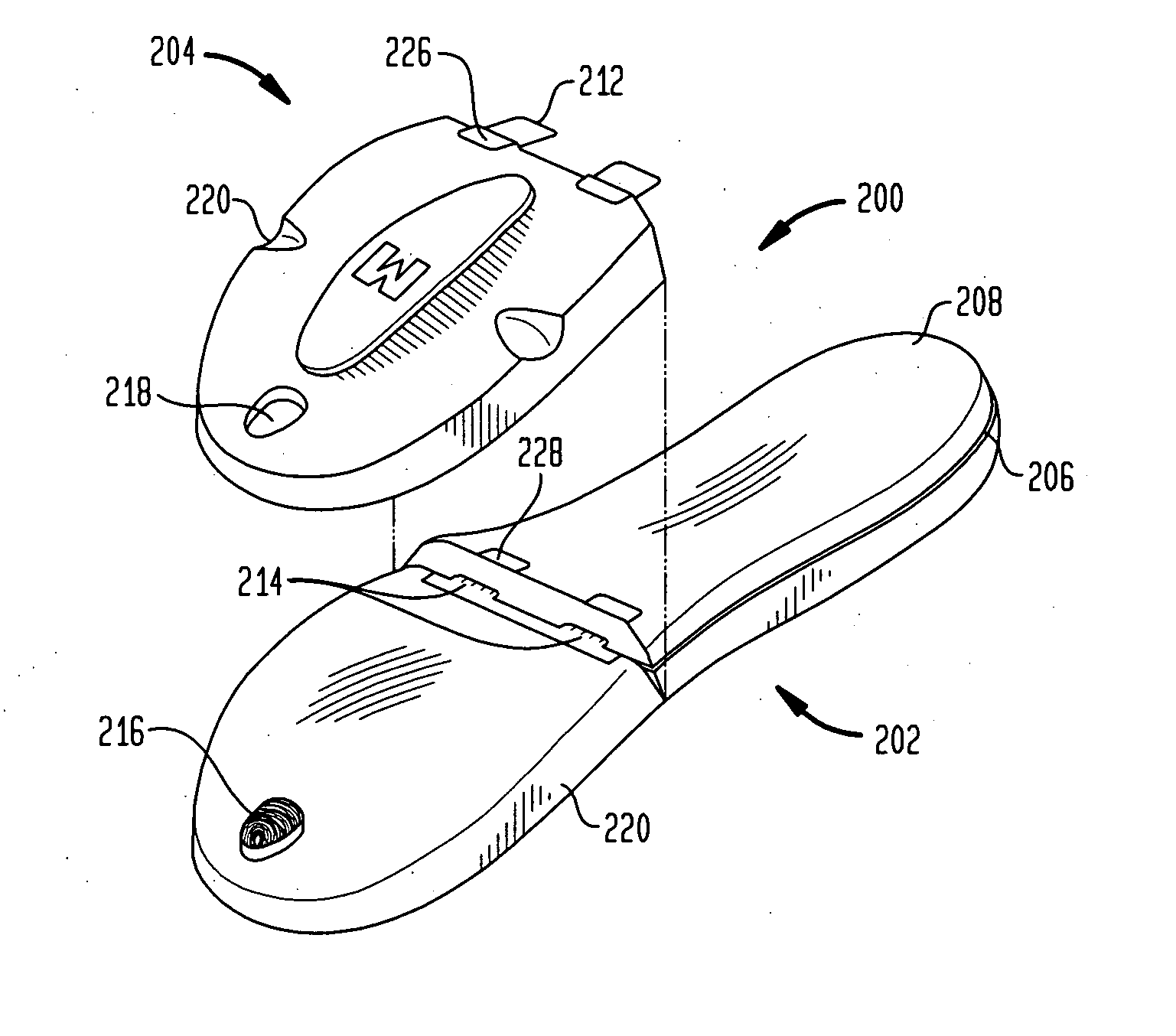Shoe footbed with interchangeable cartridges
a technology of shoe footbeds and cartridges, applied in the field of shoe footbeds, can solve the problems of poor prediction of body mass, inability to solve the problem of proper size grading, and inability to accurately predict body mass by shoe size alone, so as to reduce peak pressure points, reduce weight, and reduce the effect of landing for
- Summary
- Abstract
- Description
- Claims
- Application Information
AI Technical Summary
Benefits of technology
Problems solved by technology
Method used
Image
Examples
Embodiment Construction
[0073] In describing the preferred embodiments of the invention illustrated in the appended drawings, specific terminology will be used for the sake of clarity. However, the invention is not intended to be limited to the specific terms used, and it is to be understood that each specific term includes all technical equivalents that operate in a similar manner to accomplish a similar purpose.
[0074] As discussed earlier, adjusting forefoot volume and / or width within a shoe can significantly help to accommodate individual fit and comfort needs. The forefoot includes the metatarsals and may be considered to be approximately from the high point of the longitudinal arch of the foot forward to the tips of the toes. Reference is now made to FIGS. 1(a)-(c), which show a template sizing system 100 in accordance with aspects of the present invention. The top view of FIG. 1(a) illustrates width variations from size A to size EEE. The widths are calculated at the metatarsal heads, and may be ref...
PUM
| Property | Measurement | Unit |
|---|---|---|
| Thickness | aaaaa | aaaaa |
| Thickness | aaaaa | aaaaa |
| Length | aaaaa | aaaaa |
Abstract
Description
Claims
Application Information
 Login to View More
Login to View More - R&D
- Intellectual Property
- Life Sciences
- Materials
- Tech Scout
- Unparalleled Data Quality
- Higher Quality Content
- 60% Fewer Hallucinations
Browse by: Latest US Patents, China's latest patents, Technical Efficacy Thesaurus, Application Domain, Technology Topic, Popular Technical Reports.
© 2025 PatSnap. All rights reserved.Legal|Privacy policy|Modern Slavery Act Transparency Statement|Sitemap|About US| Contact US: help@patsnap.com



